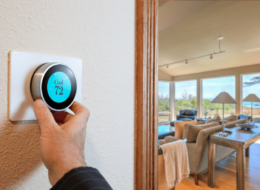A wheelchair is an essential mobility aid for millions of people worldwide. Whether you use it on a daily basis or occasionally, knowing how to clean a wheelchair and keeping it clean is vital to maintain its functionality and ensure your health and safety.
In this article, we will explore the step-by-step process to clean a wheelchair thoroughly.
How to Clean a Manual Wheelchair
Cleaning manual wheelchairs is fairly simply, as you don’t need to worry about any electronic parts as you might with cleaning power chairs.
Step 1: Prepare the Cleaning Supplies
Before starting the wheelchair cleaning process, gather all the necessary cleaning supplies, including:
- Several microfiber clothes
- Mild dish soap
- Warm water
- A bucket to mix your solution in
- A bottle of compressed air
- Handheld vacuum cleaner
You may also need a vacuum cleaner to remove dust and debris from the wheelchair.
Step 2: Remove Cushions and Accessories
You’ll want to ensure that you remove any cushions or accessories attached to the manual wheelchair before cleaning. These may include seat cushions, backrests, armrests, footrests, and other attachments like wheelchair trays or storage bags.
Clean these components separately — this will ensure that all pieces of the wheelchair are thoroughly cleaned and allow for better access to get in every nook and cranny.
Some wheelchair cushions have a removable cover to allow for easier cleaning. In this case, you’ll want to throw the cushion cover in the washing machine.
Clean the cushion covers in the washer on a cold, gentle cycle with mild detergent, then air tumble dry on a no-heat setting or air dry to prevent any damage from the heat.
Step 3: Vacuum the Wheelchair
Using a vacuum cleaner, remove any loose debris and dirt from the wheelchair frame, seat, and backrest.
Pay special attention to the hard-to-reach areas, such as the wheels and under the seat. You’ll likely want to employ the use of your vacuum’s narrow crevice attachment and the upholstery attachment while doing this.
Some especially small, tight areas will be cleaned through the use of a can of compression air – spray those little pieces of dirt away!
Step 4: Wash the Wheelchair
Next, mix some mild dish soap with warm water in a bucket. Dip the microfiber towel in the solution and make sure to wring out the towel so that it is just damp, not soaking wet.
Avoid using any kind of abrasive or rough texture which could damage or scratch the wheelchair frame.
Then, gently scrub the wheelchair’s frame, seat, and backrest with the damp cloth. Be sure to clean all areas, including the wheels, wheel spokes, footrests, and armrests.
Step 5: Rinse and Dry the Wheelchair
Once you have finished scrubbing, rinse the wheelchair with clean water to remove any remaining soap or detergent.
Use a clean, gentle damp microfiber cloth to dry the entire wheelchair thoroughly, paying attention to the hard-to-reach areas where moisture can accumulate. This will help eliminate any risks of corrosion or rust forming.
Step 6: Reassemble the Wheelchair
After the wheelchair is completely dry, reattach any cushions or accessories you removed earlier. Ensure that they are securely attached and in the correct position.
Step 7: Disinfect the Wheelchair
It’s important to remember is that cleaning isn’t the same as disinfecting. Cleaning removes germs and dirt from a surface, but doesn’t actually kill any germs.
Disinfecting is the best method for reducing the number of germs on your wheelchair, and it’s an especially important step for those who live in a hospital or other medical facility (in which case you’ll want to make sure you’re disinfecting on a regular basis).
To disinfect your wheelchair, you can simply a disinfectant solution on the wheelchair frame, seat, and backrest, and allow it to dry completely.
This video shows a similar process for cleaning a manual wheelchair, if you’re looking for a more visual guide:
How to Clean an Electric Wheelchair
Like a manual wheelchair, electric wheelchairs need regular cleaning to ensure their longevity, functionality, and hygiene.
Cleaning a power wheelchair follows many of the main steps for cleaning a manual wheelchair, but the main difference with power wheelchair cleaning is that there are electrical components involved that require extra care.
You’ll want to be sure to avoid the use of excess water or cleaning solutions so you don’t damage the electronic components.
- Unplug From Power. Before starting the cleaning process, disconnect and turn off the power supply to the electric wheelchair. You may also want to remove the battery from its protective cover to prevent damage, as you do not want the battery to come into contact with the cleaning solution.
- Remove Accessories. Like manual wheelchairs, it’s important to remove any cushions or accessories attached to the electric wheelchair before cleaning. With a power wheelchair, there’s a higher likelihood that certain cushions and backrests may be more challenging to remove. In this case, you’ll simply hand-wash the upholstery. But, when doing a deep clean, it may be worth removing these components to get a fore thorough cleaning.
- Vacuum the Electric Wheelchair. Using a vacuum cleaner with a soft bristle attachment, remove any loose debris and dirt from the power wheelchair seat, frame, and backrest.
- Use Compressed Air for crevices. The difficult-to-access areas near the battery region and any other crevices in the wheelchair base can be cleaned using a canned air compressor. This is especially handy for ridges in the joystick controller and other small areas. Any bits of dirt or hair can impact the wheelchair’s performance, so take care to really spray out those areas.
- Clean the Wheelchair With a Gentle Solution. Next, mix some mild soap or detergent with warm water in a bucket. Dip a microfiber cloth in the solution and fully wring it out. Then, gently wipe down the power wheelchair components and the upholstery, including the seat, and backrest. Be sure to clean the entire wheelchair carefully and cover all areas, including the footrests, arm rests, handles, etc.
- Wipe Dry. Gently wipe off the chair base with a clean cloth. You do not want to leave any moisture or wetness on any of the wheelchair’s components. After you’ve dried all the areas you can see with a wipe, continue to let the wheelchair air dry completely before proceeding.
- Wipe down with Disinfectant. After the power wheelchair has fully dried, spray disinfectant on another microfiber cloth (or use disinfectant wipes) to wipe down the wheelchair, focusing on its most touched areas.
- Reassemble the Power Wheelchair. After the power wheelchair is completely dry, reattach any cushions or accessories you removed earlier. Ensure that they are securely attached and in the correct position.
Be very careful to avoid running water or any excess amounts of water, as any leaking water can potentially get under the power wheelchair’s protective shroud and cause damage to the inner electric mechanisms.
Additional Tips and Extra Steps for Wheelchair Cleaning
- Clean the Wheels. While it’s optional, it’s a good idea to use a toothbrush to scrub tire cleaner onto the wheelchair tires to get them nice and shiny. While not essential, you may also want to occasionally unscrew the wheel bolts and use a wire brush to scrub them down to remove dirt, built-up grease, and residue. Keep in mind that cleaning the wheels of an electric wheelchair can be more difficult because of the deep tread on them — but it’s still worth doing!
- Brush the Joystick Area. If you’re struggling to clean a power wheelchair’s joystick area, use a toothbrush to access those small, extra-dirty spots. Be careful to not use a lot of cleaner near the electrical areas.
- Scrub the Footplate. Whether cleaning a manual or power wheelchair, you’ll want to clean the footplate too. While using a bristle brush, a foaming cleanser can be used to clean the footplate where the tape is located, which is a tough spot to saturate.
- Avoid Petroleum-Based Cleaners. While antibacterial cleaners should be fine, you’ll want to avoid any petroleum-based cleaners. Also make sure to avoid abrasive scrubbers like steel wool, which can damage the exterior.
- Apply Auto-Wax. One additional optional step is to apply a layer of non–abrasive wax to your wheelchair’s frame every few months — this will give the frame a lovely shine!
Safety Checks After Cleaning Your Wheelchair
After you’ve completed your wheelchair cleaning, it’s always important to do safety checks and verify everything is operating correctly as part of your regular wheelchair maintenance.
Make sure you check the lights, brakes, and battery connections, as well as all other relevant areas of your wheelchair. If anything doesn’t feel right or appears amiss, call a professional electric wheelchair technician for help.
Pay special attention to these areas:
- Back and Tilt Mechanisms. Check the reclining backs or tilt mechanisms, to ensure they are working appropriately.
- Examine the wheelchair’s axles, wheels, tires, casters, and bolts. Do a full, more thorough cleaning if you notice any accumulation of string, hair, dirt, grime, or anything else in the caster bearing or wheel axle, as these could end up potentially causing issues with the wheel rotations.
- Check the tire air pressure and tread. Inflate the tires to their recommended air pressure and check for worn treads or patterns on the front and rear wheels.
- Examine the wheelchair’s frame for any cracks or breaks in the metal. Bring the wheelchair to a dealership if you notice any issues.
- Fold and unfold the wheelchair. Make sure that any folding wheelchairs can be opened and closed smoothly. Lubricate folding chairs roughly once a year to keep them folding smoothly.
Whether you’re cleaning a manual or power wheelchair, following this guide will help you keep your wheelchair clean and running smoothly.
It’s important to remember that inspecting and cleaning your wheelchair regularly can help maintain its condition and extend its lifespan.
Caring for a wheelchair is an investment in your future — so make sure to take the time to do it properly!




